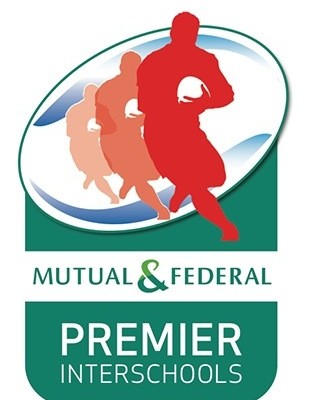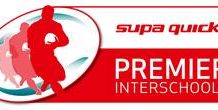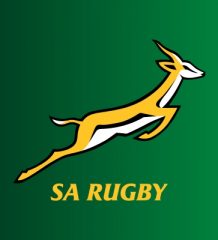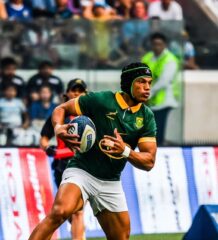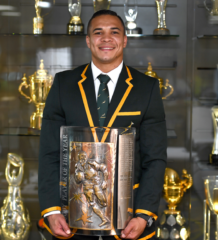Bishops vs Rondebosch Overview
 |
 |
Bishops vs Rondebosch – Background Info
Saturday 30 August once again see the two Southern Suburb giants take on each other for the 187th time since 1911. They only played the once-off match u/16 in 1908 and then resumed their yearly derbies from 1911. The first match between the two schools saw Bishops running rampant on that day winning the encounter 112-0 with Painton Cowen scoring 86 points in the match. Bishops have older rivalries against SACS, St. Andrew’s College and Paul Roos but it can’t compare against the rivalry they have against Rondebosch Boys’ High.
This is one of the longest run interschool derbies in the country and because they regularly play it twice a year, the amount of games played against each other is high. There is pride and bragging rights at stake for the next year in the leafy suburbs of Rondebosch and Newlands. The two schools are only about 400m apart and are situated in the shadows of the home of WP rugby, Newlands Stadium. Many a schoolboy from these two schools moved from their home turf over to Newlands to represent WP on the hallowed Newlands ground.
The encounter is definitely played with the most beautiful background in South Africa with Table Mountain casting its shadow over the Piley Rees field. It is also fittingly that Bishops plays some of the most beautiful running rugby in the country. Rondebosch Boys’ High also plays an open style of rugby which makes this clash one of the most exciting matches to watch.
Bosch has won 72 games with Bishops dominating the clash, winning 96 games. A draw is a rare event in a rugby match but these two sides have gone on to draw 18 times. History is on the side of Bishops, winning 52% of the games between the two sides. Rondebsoch last had a taste of victory in the first match of 2013 winning 22-7, but since then Bishops made it two in a row and can complete the hatrick on Saturday. Although Bishops would be seen as favourites for this match, history will show that it often does not favour the favourite team. The last time any of the two teams had a win on its own home ground was 11 matches ago when Bishops beat Rondebosch on the Piley Rees.
Results down the Years
| 1908 | 1 | RBHS | 0 | – | 112 | Bishops |
| 1911 | 2 | RBHS | 0 | – | 18 | Bishops |
| 3 | RBHS | 0 | – | 25 | Bishops | |
| 1916 | 4 | RBHS | 13 | – | 13 | Bishops |
| 5 | RBHS | 0 | – | 13 | Bishops | |
| 1917 | 6 | RBHS | 3 | – | 5 | Bishops |
| 7 | RBHS | 14 | – | 3 | Bishops | |
| 1918 | 8 | RBHS | 0 | – | 16 | Bishops |
| 9 | RBHS | 0 | – | 0 | Bishops | |
| 1920 | 10 | RBHS | 3 | – | 22 | Bishops |
| 11 | RBHS | 9 | – | 3 | Bishops | |
| 1921 | 12 | RBHS | 0 | – | 6 | Bishops |
| 1923 | 13 | RBHS | 9 | – | 8 | Bishops |
| 1925 | 14 | RBHS | 22 | – | 3 | Bishops |
| 1926 | 15 | RBHS | 9 | – | 10 | Bishops |
| 16 | RBHS | 3 | – | 6 | Bishops | |
| 1928 | 17 | RBHS | 3 | – | 8 | Bishops |
| 18 | RBHS | 3 | – | 15 | Bishops | |
| 1929 | 19 | RBHS | 3 | – | 7 | Bishops |
| 1930 | 20 | RBHS | 9 | – | 15 | Bishops |
| 21 | RBHS | 9 | – | 12 | Bishops | |
| 1931 | 22 | RBHS | 3 | – | 11 | Bishops |
| 23 | RBHS | 9 | – | 16 | Bishops | |
| 1932 | 24 | RBHS | 3 | – | 9 | Bishops |
| 25 | RBHS | 0 | – | 15 | Bishops | |
| 1933 | 26 | RBHS | 6 | – | 11 | Bishops |
| 27 | RBHS | 3 | – | 3 | Bishops | |
| 1934 | 28 | RBHS | 3 | # | Bishops | |
| 1935 | 29 | RBHS | 3 | – | 6 | Bishops |
| 30 | RBHS | 3 | – | 37 | Bishops | |
| 1936 | 31 | RBHS | 0 | – | 49 | Bishops |
| 32 | RBHS | 3 | – | 37 | Bishops | |
| 1937 | 33 | RBHS | 0 | – | 0 | Bishops |
| 34 | RBHS | 3 | – | 6 | Bishops | |
| 1938 | 35 | RBHS | 8 | – | 3 | Bishops |
| 36 | RBHS | 6 | – | 16 | Bishops | |
| 1939 | 37 | RBHS | 8 | – | 0 | Bishops |
| 1940 | 38 | RBHS | 3 | – | 25 | Bishops |
| 39 | RBHS | 8 | – | 11 | Bishops | |
| 1941 | 40 | RBHS | 9 | – | 13 | Bishops |
| 41 | RBHS | 8 | – | 3 | Bishops | |
| 1942 | 42 | RBHS | 4 | – | 16 | Bishops |
| 43 | RBHS | 3 | – | 10 | Bishops | |
| 1943 | 44 | RBHS | 0 | – | 21 | Bishops |
| 45 | RBHS | 3 | – | 31 | Bishops | |
| 1944 | 46 | RBHS | 21 | – | 14 | Bishops |
| 47 | RBHS | 6 | – | 0 | Bishops | |
| 1945 | 48 | RBHS | 6 | – | 0 | Bishops |
| 49 | RBHS | 8 | – | 11 | Bishops | |
| 1946 | 50 | RBHS | 3 | – | 3 | Bishops |
| 51 | RBHS | 3 | – | 3 | Bishops | |
| 1947 | 52 | RBHS | 3 | – | 6 | Bishops |
| 53 | RBHS | 9 | – | 3 | Bishops | |
| 1948 | 54 | RBHS | 17 | – | 13 | Bishops |
| 55 | RBHS | 6 | – | 13 | Bishops | |
| 1949 | 56 | RBHS | 0 | – | 23 | Bishops |
| 57 | RBHS | 6 | – | 17 | Bishops | |
| 1950 | 58 | RBHS | 14 | – | 14 | Bishops |
| 59 | RBHS | 17 | – | 6 | Bishops | |
| 1951 | 60 | RBHS | 0 | – | 8 | Bishops |
| 61 | RBHS | 0 | – | 17 | Bishops | |
| 1952 | 62 | RBHS | 6 | – | 3 | Bishops |
| 63 | RBHS | 3 | – | 3 | Bishops | |
| 1953 | 64 | RBHS | 6 | – | 3 | Bishops |
| 65 | RBHS | 13 | – | 11 | Bishops | |
| 1954 | 66 | RBHS | 11 | – | 3 | Bishops |
| 67 | RBHS | 3 | – | 3 | Bishops | |
| 1955 | 68 | RBHS | 6 | – | 8 | Bishops |
| 69 | RBHS | 6 | – | 9 | Bishops | |
| 1956 | 70 | RBHS | 9 | – | 6 | Bishops |
| 71 | RBHS | 0 | – | 11 | Bishops | |
| 1957 | 72 | RBHS | 5 | – | 0 | Bishops |
| 73 | RBHS | 3 | – | 3 | Bishops | |
| 1958 | 74 | RBHS | 8 | – | 6 | Bishops |
| 75 | RBHS | 8 | – | 0 | Bishops | |
| 1959 | 76 | RBHS | 3 | – | 0 | Bishops |
| 77 | RBHS | 0 | – | 10 | Bishops | |
| 1960 | 78 | RBHS | 3 | – | 3 | Bishops |
| 79 | RBHS | 12 | – | 3 | Bishops | |
| 1961 | 80 | RBHS | 5 | – | 0 | Bishops |
| 81 | RBHS | 13 | – | 6 | Bishops | |
| 1962 | 82 | RBHS | 0 | – | 3 | Bishops |
| 83 | RBHS | 6 | – | 6 | Bishops | |
| 1963 | 84 | RBHS | 11 | – | 0 | Bishops |
| 85 | RBHS | 9 | – | 6 | Bishops | |
| 1964 | 86 | RBHS | 13 | – | 0 | Bishops |
| 87 | RBHS | 13 | – | 0 | Bishops | |
| 1965 | 88 | RBHS | 0 | – | 0 | Bishops |
| 89 | RBHS | 3 | – | 3 | Bishops | |
| 1966 | 90 | RBHS | 14 | – | 3 | Bishops |
| 91 | RBHS | 12 | – | 3 | Bishops | |
| 1967 | 92 | RBHS | 20 | – | 0 | Bishops |
| 93 | RBHS | 3 | – | 3 | Bishops | |
| 1968 | 94 | RBHS | 6 | – | 0 | Bishops |
| 95 | RBHS | 8 | – | 8 | Bishops | |
| 1969 | 96 | RBHS | 11 | – | 6 | Bishops |
| 97 | RBHS | 25 | – | 3 | Bishops | |
| 1970 | 98 | RBHS | 14 | – | 0 | Bishops |
| 99 | RBHS | 11 | – | 9 | Bishops | |
| 1971 | 100 | RBHS | 8 | – | 3 | Bishops |
| 101 | RBHS | 24 | – | 3 | Bishops | |
| 1972 | 102 | RBHS | 13 | – | 4 | Bishops |
| 103 | RBHS | 13 | – | 4 | Bishops | |
| 1973 | 104 | RBHS | 13 | – | 12 | Bishops |
| 105 | RBHS | 13 | – | 16 | Bishops | |
| 1974 | 106 | RBHS | 3 | – | 9 | Bishops |
| 107 | RBHS | 4 | – | 18 | Bishops | |
| 1975 | 108 | RBHS | 27 | – | 3 | Bishops |
| 109 | RBHS | 22 | – | 6 | Bishops | |
| 1976 | 110 | RBHS | 14 | – | 13 | Bishops |
| 111 | RBHS | 22 | – | 12 | Bishops | |
| 1977 | 112 | RBHS | 15 | – | 12 | Bishops |
| 113 | RBHS | 33 | – | 7 | Bishops | |
| 1978 | 114 | RBHS | 6 | – | 6 | Bishops |
| 115 | RBHS | 6 | – | 8 | Bishops | |
| 1979 | 116 | RBHS | 0 | – | 9 | Bishops |
| 117 | RBHS | 0 | – | 24 | Bishops | |
| 1980 | 118 | RBHS | 22 | – | 12 | Bishops |
| 119 | RBHS | 3 | – | 10 | Bishops | |
| 1981 | 120 | RBHS | 6 | – | 12 | Bishops |
| 121 | RBHS | 6 | – | 7 | Bishops | |
| 1982 | 122 | RBHS | 6 | – | 18 | Bishops |
| 123 | RBHS | 12 | – | 6 | Bishops | |
| 1983 | 124 | RBHS | 18 | – | 10 | Bishops |
| 125 | RBHS | 6 | – | 16 | Bishops | |
| 1984 | 126 | RBHS | 7 | – | 0 | Bishops |
| 127 | RBHS | 15 | – | 11 | Bishops | |
| 1985 | 128 | RBHS | 3 | – | 12 | Bishops |
| 129 | RBHS | 16 | – | 9 | Bishops | |
| 1986 | 130 | RBHS | 4 | – | 14 | Bishops |
| 131 | RBHS | 3 | – | 13 | Bishops | |
| 1987 | 132 | RBHS | 7 | – | 12 | Bishops |
| 133 | RBHS | 3 | – | 15 | Bishops | |
| 1988 | 134 | RBHS | 3 | – | 13 | Bishops |
| 135 | RBHS | 3 | – | 10 | Bishops | |
| 1989 | 136 | RBHS | 10 | – | 58 | Bishops |
| 137 | RBHS | 4 | – | 7 | Bishops | |
| 1990 | 138 | RBHS | 7 | – | 14 | Bishops |
| 139 | RBHS | 0 | – | 9 | Bishops | |
| 1991 | 140 | RBHS | 9 | – | 12 | Bishops |
| 141 | RBHS | 9 | – | 21 | Bishops | |
| 1992 | 142 | RBHS | 3 | – | 34 | Bishops |
| 143 | RBHS | 6 | – | 27 | Bishops | |
| 1993 | 144 | RBHS | 10 | – | 26 | Bishops |
| 145 | RBHS | 5 | – | 19 | Bishops | |
| 1994 | 146 | RBHS | 6 | – | 5 | Bishops |
| 147 | RBHS | 19 | – | 9 | Bishops | |
| 1995 | 148 | RBHS | 7 | – | 6 | Bishops |
| 149 | RBHS | 11 | – | 10 | Bishops | |
| 1996 | 150 | RBHS | 17 | – | 7 | Bishops |
| 151 | RBHS | 6 | – | 0 | Bishops | |
| 1997 | 152 | RBHS | 18 | – | 0 | Bishops |
| 153 | RBHS | 31 | – | 11 | Bishops | |
| 1998 | 154 | RBHS | 0 | – | 20 | Bishops |
| 155 | RBHS | 7 | – | 15 | Bishops | |
| 1999 | 156 | RBHS | 16 | – | 15 | Bishops |
| 157 | RBHS | 9 | – | 24 | Bishops | |
| 2000 | 158 | RBHS | 22 | – | 19 | Bishops |
| 159 | RBHS | 27 | – | 17 | Bishops | |
| 2001 | 160 | RBHS | 0 | – | 17 | Bishops |
| 161 | RBHS | 0 | – | 18 | Bishops | |
| 2002 | 162 | RBHS | 8 | – | 53 | Bishops |
| 163 | RBHS | 25 | – | 41 | Bishops | |
| 2003 | 164 | RBHS | 5 | – | 18 | Bishops |
| 165 | RBHS | 19 | – | 78 | Bishops | |
| 2004 | 166 | RBHS | 8 | – | 27 | Bishops |
| 167 | RBHS | 26 | – | 22 | Bishops | |
| 2005 | 168 | RBHS | 6 | – | 31 | Bishops |
| 169 | RBHS | 12 | – | 14 | Bishops | |
| 2006 | 170 | RBHS | 3 | – | 70 | Bishops |
| 171 | RBHS | 22 | – | 75 | Bishops | |
| 2007 | 172 | RBHS | 27 | – | 48 | Bishops |
| 173 | RBHS | 24 | – | 27 | Bishops | |
| 2008 | 174 | RBHS | 8 | – | 20 | Bishops |
| 175 | RBHS | 15 | – | 47 | Bishops | |
| 2009 | 176 | RBHS | 16 | – | 10 | Bishops |
| 177 | RBHS | 6 | – | 10 | Bishops | |
| 2010 | 178 | RBHS | 10 | – | 38 | Bishops |
| 179 | RBHS | 19 | – | 19 | Bishops | |
| 2011 | 180 | RBHS | 34 | – | 18 | Bishops |
| 181 | RBHS | 12 | – | 37 | Bishops | |
| 2012 | 182 | RBHS | 3 | – | 15 | Bishops |
| 183 | RBHS | 19 | – | 11 | Bishops | |
| 2013 | 184 | RBHS | 22 | – | 7 | Bishops |
| 185 | RBHS | 11 | 23 | Bishops | ||
| 2014 | 186 | RBHS | 14 | 52 | Bishops | |
| 187 |
2014 Season
The Bishops season showed lots of promise right at the start when they beat Paarl Boys High 10-0 in a 20 minute-a-side game at Newlands for the WP season opener. They then traveled to Port Elizabeth for the Grey High festival and in their first full match came up against a inform Glenwood from Durban who promptly brought them back to earth. They lost that match 11-23 but bounced back in the next one to beat Kingswood College from Grahamstown comprehensively 45-14. This started a winning streak of 6 games in a row including wins over Boland Landbou, St Andrews and SACS. They were stopped in their tracks in Paarl when they came up against powerhouse Paarl Gim and their season somewhat faded from then on.
They lost their next match against Wynberg and then had two wins on the trot against Bellville and the first Derby against Rondebosch which they won comfortably 52-14. Then they had to travel to Brugstraat in the Paarl and came up against Paarl Boys who did not forget the opening season encounter at Newlands. On a rainy day and a very wet and muddy pitch, the Paarl Boys dominated the match with their forwards and eventually ran out 36-3 winners. After the June holiday break, they played old rivals Paul Roos at Markotter and got thumped 14-36. SACS provided a nice alternative to this losing streak when they succumbed 26-12 only for Bishops to lose their second game against Wynberg the very next week.
Bishops provided 6 players to the WP Craven Week team and two players for the Academy team. Thus with 9 provincial players in their midst, one expected them to do a little better than they did this season.
| Bishops WP Craven Week Players:JP Smith (Prop)M da Silva (Flank)
S Abrahams (8th Man) J MacIntyre (Flyhalf) J Heunis (Centre) G Pieterse (Fullback) |
 |
| Bishops Academy Week Players:S MitchellA Manual | Bishops Old Boys Ollie Kebble and Nizaam Carr with the Bishops WP representatives of 2014. |
Rondebosch Boys had a 2014 season they would rather forget. So far they have played 19 games losing 13 and winning only 6. That is a statistic not usually found with this proud bastion of rugby in the Southern Suburbs. Rondebosch fielded a very young side this year consisting mostly of their successful 2013 U/16 group. As expected, the step up to u/19 rugby was always going to be daunting and they should see this season as a learning curve and use the knowledge to their advantage in 2015. Although they have not scored any victories over Premier A teams other than SACS, this young team managed to take Paul Roos to a nail-biting finish when there was only 3 points difference with 2 minutes to go. They were also the only Cape Town side to manage breaching the mighty Paarl Gim line 4 times. That being said, no Rondebosch team can ever be considered underdogs in a Derby match against the old foe. They have proved in the past that they can produce the goods on the day and no less is expected of the 2014 crop.
Rondebosch provided only one player to a WP team this season in flanker MZ Davids who played for the Craven Week side in Middelburg during the June Holidays.

Rondebosch will have to play as a team and unit to win at Piley Rees on Saturday.

DIOCESAN COLLEGE – PROFILE
The Diocesan College, or Bishops as it is more commonly known, is an independent, all-boys school situated in the suburb of Rondebosch in Cape Town, South Africa. It consists of three schools: the College for grades 8 – 12 and post matric (an optional year following grade 12 which covers the A-levels); the Preparatory School for grades 3 – 7 and the Pre-Preparatory School for Pre-Kindergarten Grade 0-2.
Established in 1849, it is the fifth oldest existing school in Africa. The Collegiate of the Diocese of Cape Town (hence the name Diocesan College) was founded by Bishop Robert Gray, the first Anglican bishop of Cape Town, in 1849 at his house, Bishopscourt in Cape Town.[2] He founded two schools there, one of which was described as for the “native children” and the other for “European children” (this being the current school). Living with schools was hard for the bishop and this led him to establish the schools elsewhere. The black children moved to accommodation near the city, where Zonnebloem College now is. This movement left the bishop short of money and so he bought an unproductive farm in Campground Road, Rondebosch, to which the school was moved and on which it remains.The school did not prosper until Canon George Ogilvie arrived from prosperous St. George’s Grammar School, attached to St. George’s Cathedral, Cape Town in the city. The canon brought some boys with him and the bishop’s school flourished. It then became the Diocesan College, but that too was a mouthful and it was generally referred to as the Bishop’s school – hence its nickname. On arriving at Bishops, Canon George Ogilvie brought an early adoption of the game of rugby to the school which is noted as the introduction of rugby to South Africa.
Originally the school catered mainly for boarders, but since the 1970s it has had more day scholars than boarders. For some years it ran university classes, but in 1910 those classes left for the South African College, which was later to become the University of Cape Town.The school had only three principals between 1919 and 1982 – Harold Birt, Hubert Kidd, the first layman to be the principal, and Anthony Mallett. Since then it has had three more. Mr Guy Pearson is currently the Principal.
Since 1921, a post matric year has offered students the opportunity to write the University of Cambridge A-Level examinations. In recent times, girls have been admitted to this year. Boarding facilities are also available. The College has eight houses: Birt, Gray, Kidd, Mallett and Ogilvie for day-scholars. Founders, School and White are the boarding houses. Each house has about 70 – 100 students, who are looked after by a housemaster, who have one or two deputies. Tutors work in each house, and follow the progress of a student throughout his high-school career. Tutor groups are set up in a vertical system, meaning there are around 3–5 boys from each grade within in the tutor group.
The Preparatory School follows a similar structure with four houses: Van der Bijl (for boarders and day-boys), Bramley, Brooke and Charlton. Grades 6 and 7 feature “‘Home Groups”‘ which have a similar structure to Tutor Groups at the college but run on a more informal basis
Images of Bishops

The College offers numerous scholarships, mostly to new students in grade 8 which last until grade 12, covering certain percentages of the tuition fees of the college. The recipients of these scholarships are expect to maintain a high standard of excellence in their respective award areas, and scholarships may be forfeited if this is not done (For example, if a music scholarship recipient does not continue with music until grade 12, he will lose the scholarship).
Bishops is one of only four schools in the world to offer an annual Rhodes scholarship since 1901 to an ex-pupil to attend the University of Oxford. This is a result of the school having been part of the initial Rhodes Scholarship Experiment. When approached to help formulate the plan for the scholarship, Bishops was suggested by Mr Ernest Kilpin (later Sir Ernest, after he was knighted for services to the Union of South Africa) as a suitable school for the experiment and Cecil Rhodes agreed. Like Bishops’ founder Robert Gray, he mistrusted purely secular education..[3] A shortlist is selected yearly from boys who are matriculating that year and their progress is monitored. After completing their first degree, a student from the shortlist is awarded the scholarship for further studies at Oxford. Starting with the 2012 shortlist, alumni of St George’s Grammar School, St Cyprian’s School, Herschel and The LEAP School 1 will also be eligible for selection to the Scholarship.
Rugby at Bishops
There is a myth that William Webb Ellis started rugby. There is also a myth that Canon Ogilvie brought rugby to South Africa. In fact he detested the game and did not want Bishops to play it. What he brought to South Africa in 1861 was a form of football at a time when there was no game called soccer and rugby football was played only at Rugby School. Canon Ogilvie’s game was based on what was played at his old school, Winchester College in Hampshire. George Ogilvie was a remarkable personality. His nickname was Gog and the game played at the Cape was often referred to as Gog’s Game or Gogball.
Bishops got the Cape playing football of this kind, starting with the South African College. Bishops and SACS may well have played each other as far back as 1892. Eventually clubs were formed, Hamiltons in 1875 and then Villagers to start with, and then in the late 1870s the rugby game was brought to the Cape and became generally accepted, as it had become in England in 1871. Then the Western Province RFU was formed to regulate the game in the Western Province. Bishops, like SACS and then Victoria College out at Stellenbosch, played in the Grand Challenge competition of the WP RFU. That all changed with the coming of the school. In those early days Bishops had the advantage of coaching, especially by HH Castens, a South African old boy of Rugby School and Oxford. Then it also had the great South African rugby personality and thinker of last century ion Barry Heatlie, whose nickname was usually Fairy but also Ox. Heatlie, who helped to found the Old Diocesans’ Union, also formed an Old Diocesans RFC. In forming the old boys’ union he – or rather his wife –had worked out colours. The predominant colour was green. In days when dyeing was the simplest way of getting rugby jerseys, the OD RFC decided to use green – myrtle green.
Touring teams came to South Africa in 1891, 1896 and 1903. In those days the local union would appoint a captain who would pick a team to represent South Africa and give them jerseys to play in. When Heatlie became captain in 1896 he gave them his club’s jerseys – and South Africa won for the first time. When he was again made captain in 1903 he gave his teams green jerseys again and South Africa won a series for the first time. And so South Africa still plays in green jerseys. In 1903 Gerald Orpen of SACS and two Bishops men, Fairy Heatlie and Biddy Anderson, pushed through a recommendation that the springbok be added to the jersey. It had been intended for 1903 but first came to pass in 1906.
The following is the list of those acknowledged as Bishops internationals:
South Africa: Mauritz van Buuren, Harry Boyes, who was the first secretary of the SA Rugby Board when it was founded in 1889, Frank Guthrie, Bill Bisset, Jack Hartley, who is the youngest player ever to have represented South Africa, Charlie van Renen and his brother Willie, Percy Twentyman Jones, who became the president of the WP RFU and also played cricket for South Africa, Biddy Anderson, who captained South Africa at cricket and refereed a Test, FR Myburgh, Paul Scott, Davey Cope, the first man to kick a goal for South Africa in a test, who was killed in a train smash at Mostert’s Hoek on his way to a Currie Cup tournament, Theo Samuels who first scored a try for South Africa, Barry Heatlie (captain), Long George Devenish, who was for years a national selector, Joe Barry, Syd Ashley, Bertie Gibbs, Paddy Carolin (captain), who first devised the 3-4-1 scrum formation and regretted doing so, Mary Jackson, Barley Burdett, who died in World War I, Noel Howe-Browne, Bai Wrentmore, Geoff Grey, who became a national selector, DO Williams,. George D’Alton, John Apsey (Prep only), Dendy Lawton, Howard Watt, Dennis Fry and his brother Stephen (captain), Tommy Gentles, Bobby Johns, Peter Whipp, Dugald Macdonald, Guy Kebble, Christian Stewart, Robbie Fleck, Selborne Boome, David von Hoesslin, Hanyani Shimange (Prep only) and, François Louw. Fleck, Boome and Von Hoesslin were in the same team at Bishops, when the star was Herschelle Gibbs.Nick Koster (International Barbarians)
For England: Reg Hands, Tuppy Owen-Smith (captain), Ossie Newton Thompson, Clive van Ryneveld, Christopher Newton Thompson (wartime), Stuart Abbott
For Scotland: Harold McCowat, Beak Steyn, Mike Dickson, Donald Macdonald
For Wales: Mike Davies, Haldane Luscombe
For Canada: Christian Stewart
For Zimbabwe: Mark Neill, Russell Ashley-Cooper (Many others played for Rhodesia)
For Australia: Daniel Vickermann
For Argentina: Barry Heatlie – which means that he played for two countries.
In addition Bill Bisset and Biddy Anderson refereed tests.
In the 2003 World Cup Bishops had 3 old boys representing 3 different countries, a world first. Selborne Boom for the Boks, Daniel Vickerman for Australia and Stuart Abbot for England.
Francois Louw, Bishops latest Springbok playing for SA, WP and Bath.

Basil Bey is the most successful Bishops coach of all times. From 1986 to 1989 Bishops only lost one game. That was in 1987 to Grey High.
RONDEBOSCH BOYS HIGH– PROFILE

Rondebosch Boys’ High School is a state secondary school in Rondebosch, a suburb of Cape Town, South Africa. It was founded in 1897 by Rev Marchand and Messrs Andrews and Fletcher and soon carved a name for itself in the larger community. As a result of the initiative by the Rev P B Marchand, the “Rondebosch High School for Junior Boys” started with eight boys in Glena Hall in Erin Road, today the premises of the Terrapotta pottery school. The first headmaster was Mr Robert McLennan Ramage, and on the first committee were Mr J Andrews (Chairman), Rev P B Marchand (Secretary) and Mr W Fletcher (Treasurer). The school dayboy houses are named after these four men.
- 1901 First RBHS boy passes Matriculation Examination
- 1904 Mr Sidney “Dad” Mason became headmaster. First school magazine produced, largely written by Mr Mason. School motto “Altius et Latius” and the school colours of light blue, dark blue and gold established
- 1951 Memorial Hall opened. Use of the Mears Meadows fields granted to the school. Tennis courts built on the “desert”.
- 1979 Mears Centre opened. Extensions to the High School completed. This included new laboratories, classrooms and a gymnasium. Clarke House on the Clent Property became the headmaster’s official home in 1983.
- 2000 Opening of Centenary Computer Room and E1942 Centenary Pavilion. Made possible through generous funding from Old Boys, in particular the class of 1942.
- 2002 Allan Cormack Science Laboratory opened in honour of the Rondebosch Old Boy who was awarded the Nobel Prize for Medicine in 1979.
- 2006 Opening of Mason House extension, the Tinkie Heyns Wing
- 2007 7 Additional staff housing units completed on the Clent Property. New Swimming and Water Polo pool (International FINA dimensions and regulations).
- 2009 Carleton Lloyd Rugby Stand completed.
- 2010 Oakhurst carpark completed.
- 2011 Tickey de Jager Mathematics Room opened. Professor “Tinkie” Heyns Memorial Garden completed.
- 2012 Mr S Simpson appointed Headmaster.
- 2013 Chris Muirison Centre opened.
- 2014 Reopening of the Reeler Music Cent
There is a long tradition of academic excellence at Rondebosch. The academic ethos encourages students in independent thought, interest and self-disciplined study before routine class learning. This ethos promotes real academic readiness for tertiary study and life in general. It also encourages a high degree of academic self-motivation – one of the many reasons why the pupils are regular winners and finalists in academic competitions.
The school believes that sport helps to establish a wonderful rapport between staff and pupils. Efficiently coached and organized, sport promotes friendships, group integration, self-confidence and assists in the development of personal maturity and inter-personal skills. Not only are top players considered – every boy is encouraged to participate and enjoy his chosen activity. Cultural activities have always been part of the balanced make-up of learners at Rondebosch Boys’ High School. The standards achieved by students show consistently high performance benchmarks. Cultural activities are structured to augment both individual and team performances. The focus, however, remains on the process of an individual’s involvement and development in a particular activity, rather than the end result. It is the school’s view that the educational value of personal development through involvement in cultural activities is far more important than the number of awards obtained at the end of the day.
Images of Rondebosch

Rugby at Rondebosch Boys High
Rugby at RBHS is steeped in tradition, pride and passion. The impressive list of provincial and national rugby players bears testimony to the depth of association between Rondebosch and top class rugby.
Rondebosch started off as a soccer playing school, but by 1904, rugby was being played on an unofficial basis. In 1906 soccer was dropped and the bold step was taken to enter a rugby team in the u/16 competition where it had to compete, among others, with those schools with colleges attached to them, namely Diocesan College, SACS and Stellenbosch. By 1913, the school won the under 15 and under 13 competitions. From this time onwards Rondebosch became a force in WP schools’ rugby, though it was 1922 before the School could win the under 17 Shield for the first time as well as the u/15 and u/13 competitions. The golden years of Rondebosch rugby were undoubtedly the 1960s. Three teams went through unbeaten in the years 1960, 1964 and 1967.
RBHS practices a professional and innovative approach to the school’s rugby with a comprehensive Performance Sports Testing programme. This programme assesses players’ physical strength/weaknesses in relation to his playing position. It focuses on the abilities all players should possess and aim to develop, to improve his performance profile. RBHS was the first school in South Africa that embarked on a study to maximize the safety of its players and adopt the programme. This includes using a sophisticated, research-based software tool designed to assist coaches and doctors to better manage a player’s return after sustaining a sports-related concussion. The system is called IMPACT (Immediate Post Concussion Assessment and Cognitive Testing).
Springboks: Gerald Thompson, Frank Mellish, Jackie Tindall, Willie Rousseau, Bennie Osler, Stanley Osler, Jock van Niekerk, Mervyn Ellis, Jack Gage, Alvi van der Merwe, John Apsey, Dendy Lawton, James Starke, Mike Lawless, Ian McCallum, Roy McCallum, Chris Pope, Derek van den Berg, Joel Stransky (at Rondebosch till his under 16 year), Gcobani Bobo and Hanyani Shimange.
England: Frank Mellish; France: Eric Melvill; Ireland: Dion O’Cuinneagain (captain), who also captained the South African Sevens side; USA Sevens: Dallen Stanford.
In the 1st test against the great 1974 Lions side of Willie-John McBride, three Rondebosch Old Boys were in the starting line-up for the Springboks at Newlands. Ian McCallum at fullback, his brother Roy McCallum at scrumhalf and wing Chris Pope. That was the only time the three ever played a test together. SA lost that test 12-3 and the Springbok selectors panicked and started what is now known as “the farce of ‘74” selection process. That test was the last of Ian McCallum’s 11 tests and the first of Chris Pope’s 9 tests. Sadly that was Roy McCallum first and only test. He deserved a second chance as much as anyone as he was n brilliant scrumhalf, but suffered behind a springbok pack murdered by the British Lions. He paid the ultimate price for his forwards lack of dominance.
The 1974 Springbok team vs British Lion at Newlands with the three Rondebosch Old Boys!
Back: Gerald Bosch, Roy McCallum, Dugald MacDonald, Jan-Boland Coetzee, Johan Oosthuizen, Peter Whipp, Gerrie Germishuys
Middle: Dawie Snyman, Paul Bayvel, André Bestbier, Sakkie Sauermann, Kevin de Klerk, Morné du Plessis, Chris Pope, Rampie Stander
Front: Piston van Wyk, Gert Muller, Ian McCallum, Johan Claassen (coach), Hannes Marais (captain), Frances Mellish (Western Province liaison), Ian Kirkpatrick (manager), Jan Ellis, John Williams

Related Posts
« Bok Women 7s fixtures announced for World Series Qualifier EP Kings team announced to take on Lions at home »


